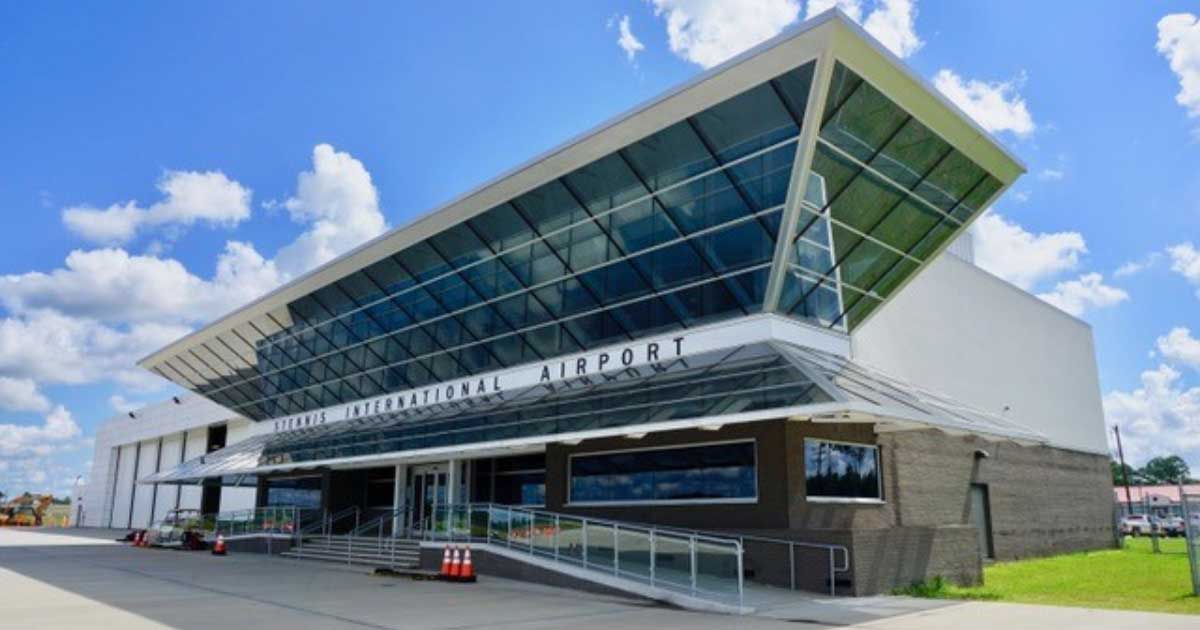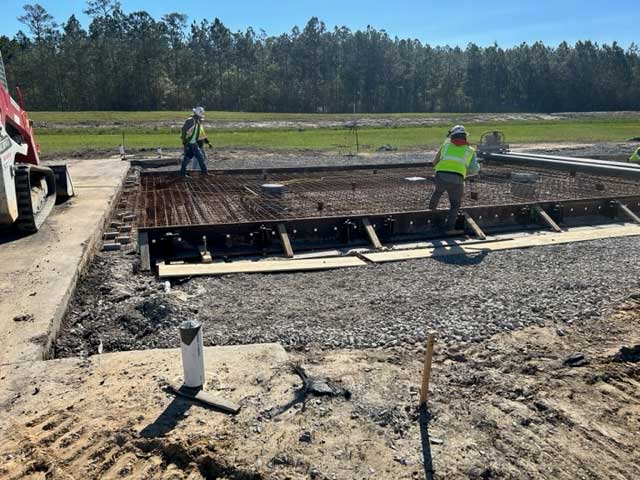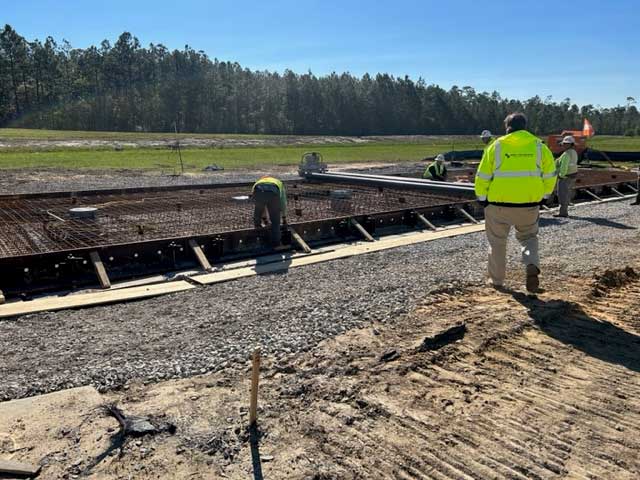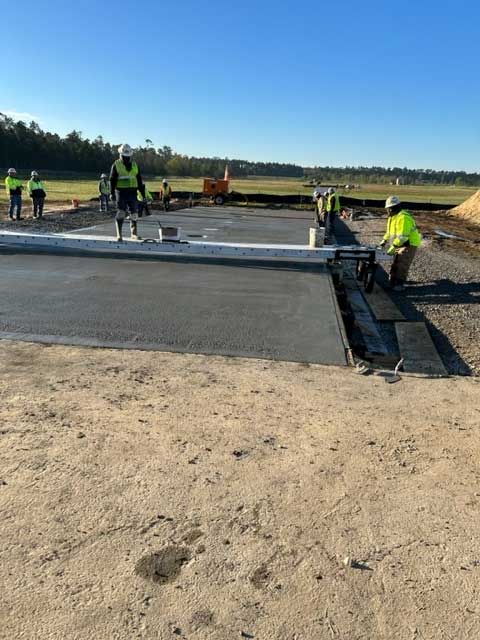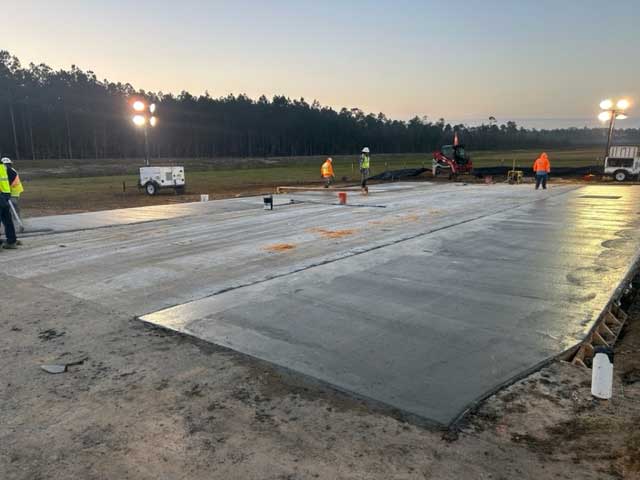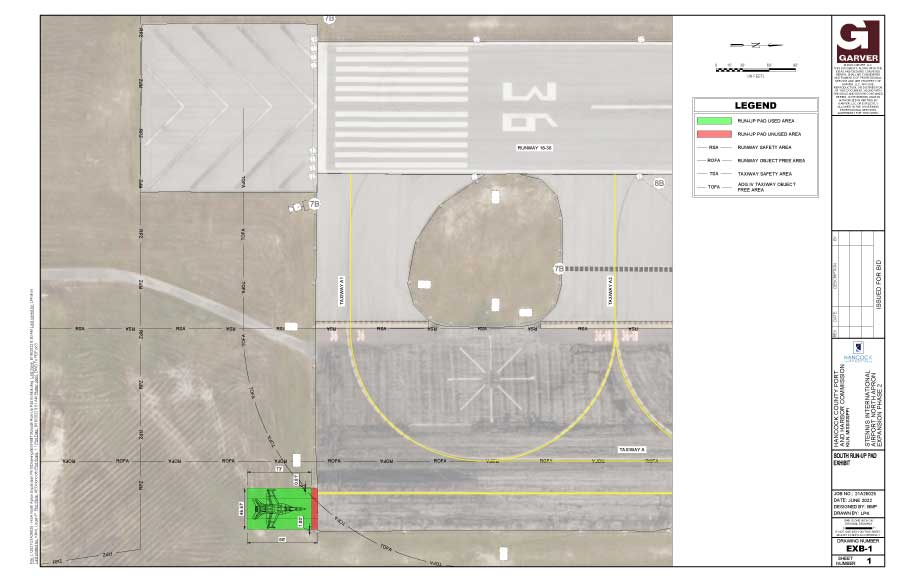Ever wonder how jets and engines are tested before taking off or going into space? The answer lies with run -up pads, and a new one is under construction at Stennis International Airport.
– By Lisa Monti
Defense Department contractors, and general aviation customers will perform test firings on the pad to certify that jet engines are flight ready after maintenance or upgrades are performed, or after periods of extended storage. Floore Industrial Contractors Inc., of Moss Point is building the project, which started in February. The run-up pad work includes constructing thick pavement and installing specialized fittings to anchor aircraft in place while the powerful engines are fired for a final check before flight. The engine tests will be run for various durations. Tyonek, a U.S. Department of Defense supplier of radar and other aerospace electronics at Stennis, has plans to conduct a series of at least 25 tests when the pad is completed. Paul Stein, vice president of Tyonek Services Group, called the Hancock County Port and Harbor Commission “a valued partner” in a statement about the new pad. “The construction of this run-up pad will significantly increase the capability for our facilities at Stennis International Airport,” Stein said. Stennis is one of a handful of general aviation airports to have the capability to test jet engines, according to Blaine LaFontaine, Port and Harbor Commission executive director. The new pad will be added to the list of features Stennis Airport offers, including its 8,500-foot runway. The airport is close to interstate and state highways and is inside the Foreign Trade Zone. Areas designated as FTZs within the United States are treated by Customs as though they were located outside of the U.S. border. These federally approved zones offer warehousing and distribution facilities and manufacturing operations as well as other benefits for companies that import and export products. Elsewhere at the airport, Pearl River Community College is building its Aviation Aerospace Workforce Academy and hangar, where students will receive workforce training and adult education services will be offered.
The $12 million academy, where classes will begin this August, will consist of an 18,000-square-foot hangar built alongside an airport runway and a 36,000-square-foot academy building, scheduled for completion in June 2024. Classes will start in the academy in August 2024. Also under construction is more than 98,000 square feet of space to the airport’s north apron. That $3 million expansion project will be completed in June. The new apron will give the airport more space for aircraft parking and allow for the development of additional hangar space in the future.
Enjoy this feature?Comments are closed.
|
Archives
February 2024
Categories
All
|
||||||||||
Shoofly Magazine Partners
Our Shoofly Partners are local businesses and organizations who share our mission to enrich community life in Bay St. Louis, Waveland, Diamondhead and Pass Christian. These are limited in number to maximize visibility. Email us now to become a Shoofly Partner!

